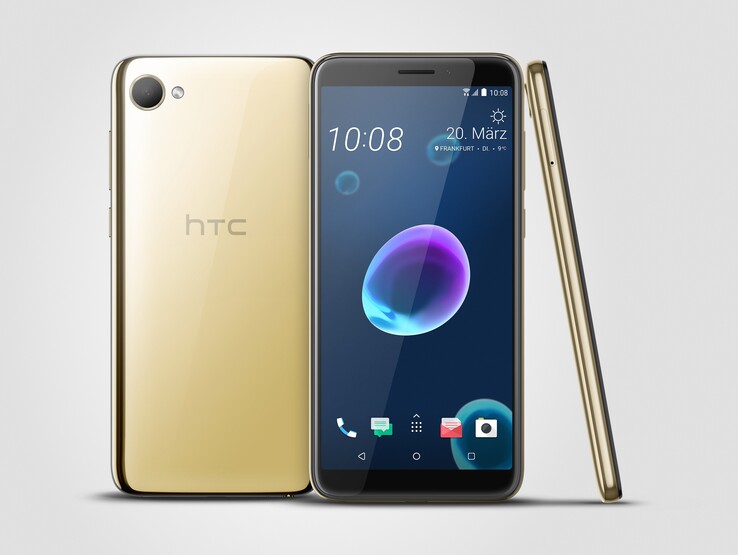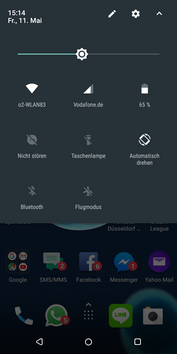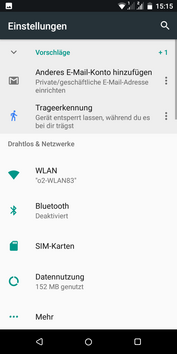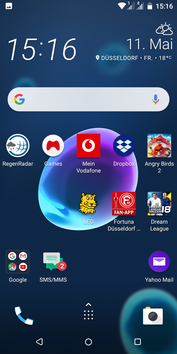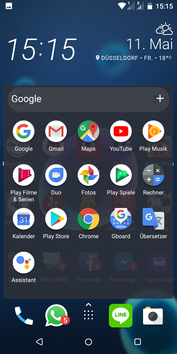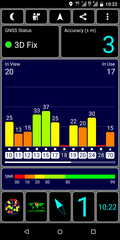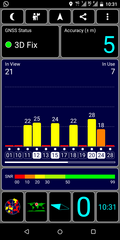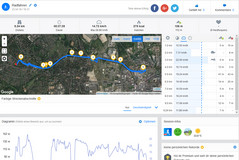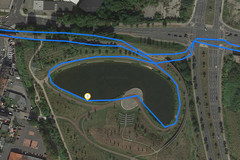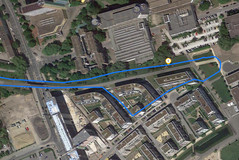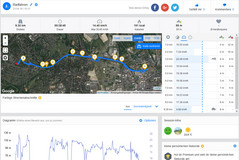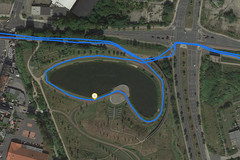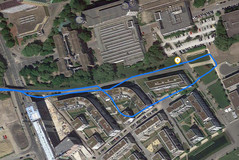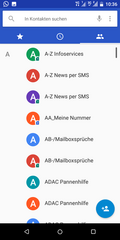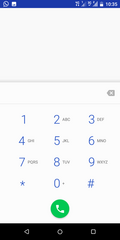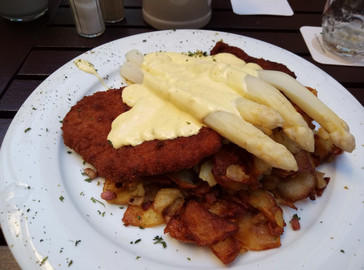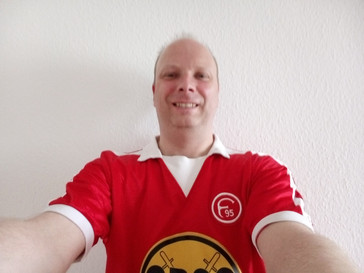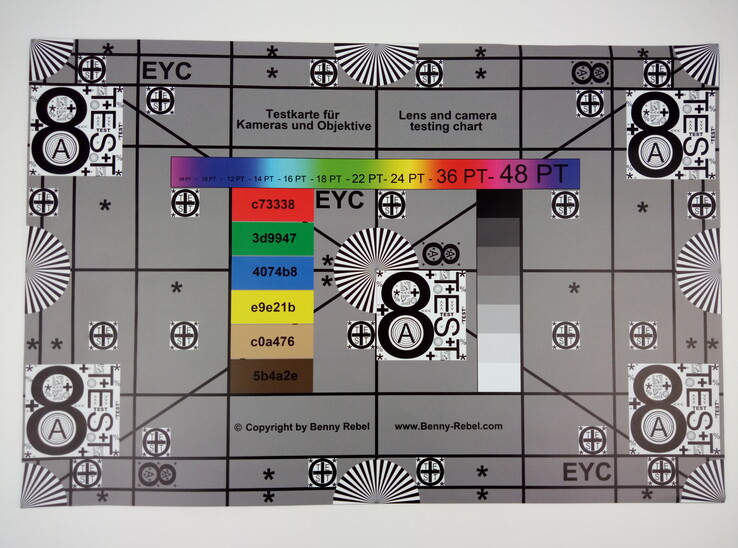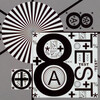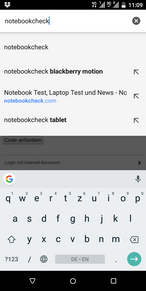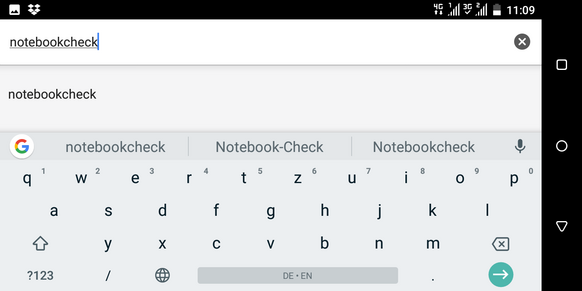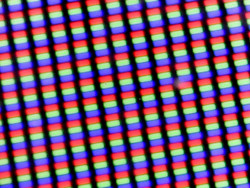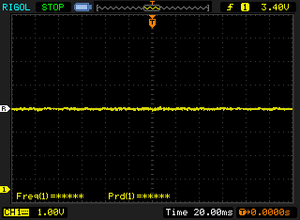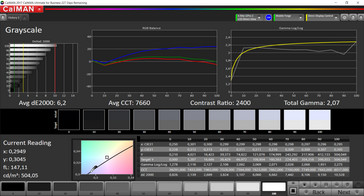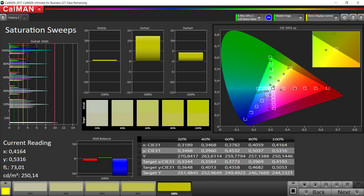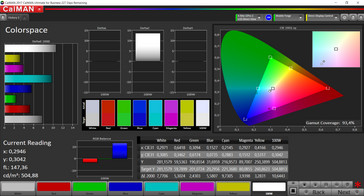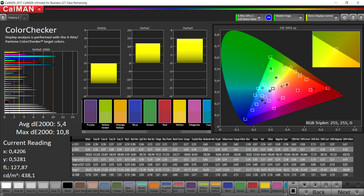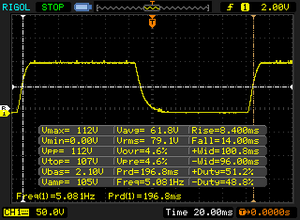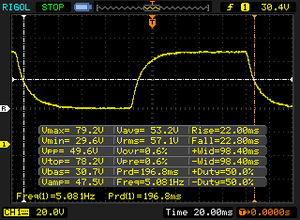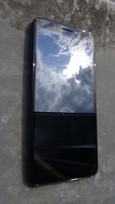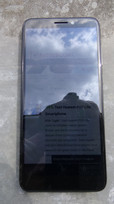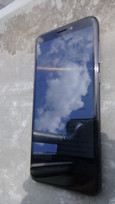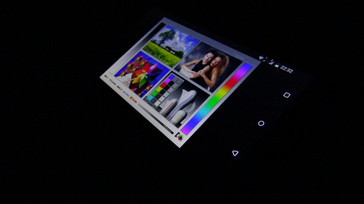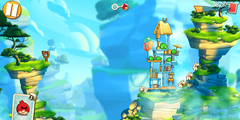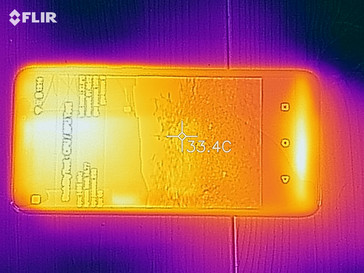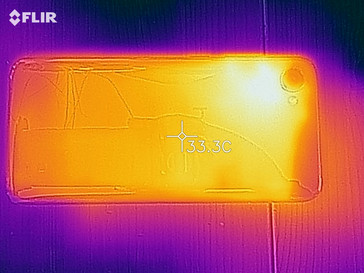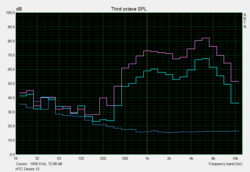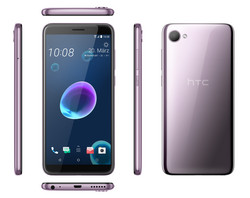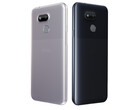HTC Desire 12 Smartphone Review
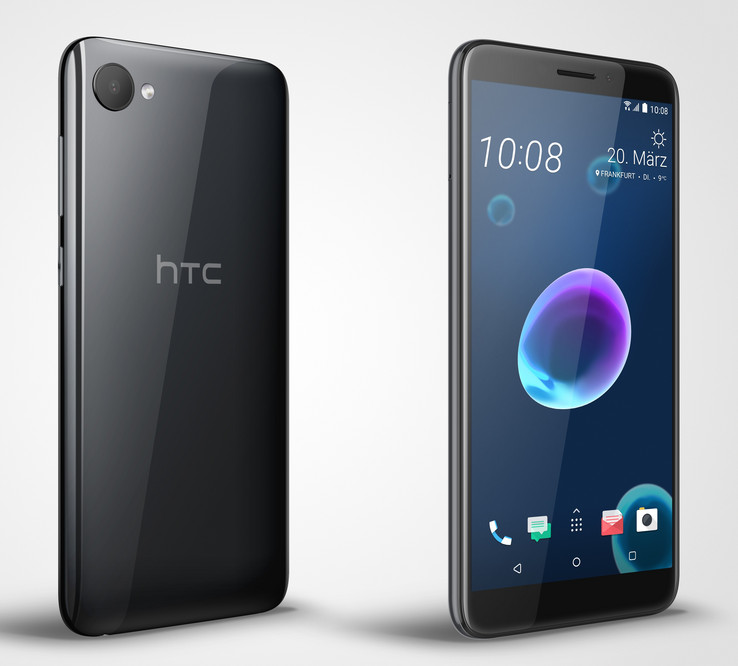
It is hard to believe, but the HTC Desire 12 with its 5.5-inch display has a bigger brother. The HTC Desire 12+ comes with a 6-inch screen. However, both devices have the same resolution of 1440x720. Therefore, the HTC Desire 12 offers a higher pixel density of 293 PPI.
However, when it comes to software, the smaller HTC Desire smartphone lags behind. The HTC Desire 12+ runs the latest version of Android (8.0 Oreo), while the HTC Desire 12 runs Android 7.1.1 (Nougat). The HTC Desire 12 forgoes a fingerprint sensor, which is quite unusual, even in the 200-Euro (~$235) price range.
The HTC Desire 12 uses the MediaTek MT6739 as its CPU. It has four cores clocked at 1.3 GHz and is supported by 3 GB of RAM. The IMG PowerVR GE 8100 serves as the graphics processing unit. It operates at 570 MHz. With the quad-core Qualcomm Snapdragon 450, the HTC Desire 12+ offers a superior SoC. The Snapdragon 450 in the HTC Desire 12+ runs at 1.8 GHz.
The main cameras of the HTC Desire 12 and the HTC Desire 12+ are the same. They have a resolution of 13 MP and can record video in Full HD. On the front, the HTC Desire 12 has a 5 MP camera, while the bigger brother offers an 8 MP front-facing shooter.
With an MSRP of 199 Euros (~$234), the HTC Desire 12 is exactly 50 Euros (~$58) cheaper than its bigger brother. You can get the HTC Desire 12 for around 190 Euros (~$223) in major online stores a month after launch. For the same money, you can get the Sony Xperia L2 with a 5.5-inch display, the Samsung Galaxy J5 with a 5.2-inch display as well as the Huawei P Smart and the Honor 9 Lite, both of which have 5.65-inch displays. The smartphones from Huawei, and its subsidiary Honor, run the latest version of Android (8.0).
Case - HTC Desire 12 is neither dust nor water-resistant
Unfortunately, the case of the HTC Desire 12, which features a unibody design, is neither dust- nor waterproof. The build quality is solid. However, because the case is made of plastic, it does not feel particularly high-value in the hand. The glossy surface on the back of the smartphone looks especially good in the “Gold” color scheme. Nevertheless, it becomes covered with fingerprints very quickly. That being said, it is not so smooth that the HTC Desire 12 is in any danger of sliding off of a smooth tabletop.
The navigation elements are in their usual place. The power button and the volume rocker are located on the right side. The nano-SIM/MicroSD slot finds its place on the left side.
The low weight of the device (137 grams) leaves a positive impression. With the dimensions of 148.5 x 70.8 x 8.2 mm, the smartphone can be used with one hand. However, this takes some getting used to.
Connectivity - HTC Desire 12 with 32 GB of internal storage
The HTC Desire 12 uses the MediaTek MT6739 as its CPU. It is an entry-level SoC for Android smartphones. It has four Cortex A53 64-bit cores that operate at up to 1.5 GHz. The IMG PowerVR GE8100 is used as the graphics unit. It runs at up to 570 MHz. The SoC also features an LTE modem (Cat. 4 download / Cat. 5 upload), a Wi-Fi module (802.11 a/b/g/n) and support for UHD video (H.265).
The HTC Desire 12 offers 32 GB of internal storage, which is standard fare for bottom-tier mid-range devices. However, you can expand the storage capacity of the smartphone with the help of a MicroSD card of up to 2 TB. The Micro USB 2.0 port is located on the bottom of the device. It can only be used for charging the device and transferring data.
Software - HTC Desire 12 runs Android 7.1.1
We expected the HTC Desire 12 to run Android 8.0 (Oreo) right out of the box. However, the mid-range smartphone runs Android 7.1.1 (Nougat). Strangely enough, the Google Assistant is not preinstalled. However, you can install it from the Google Play Store.
The Desire 12 comes with HTC’s proprietary launcher. It features, for example, an HTC app called “Sense Companion”, which recommends interesting places to go to in the vicinity and also events to see. The user can stay up to date with current events with the help of the app called “News Republic” and HTC BlinkFeed. The HTC Desire 12 also offers a voice recorder and FM radio.
Communication and GPS - the HTC Desire 12 as a navigator replacement
The integrated Wi-Fi module supports the IEEE-802.11 standards a/b/g/n and operates in the 2.4 and 5 GHz spectral bands. The data transfer rate of 89.1 Mbit/s with our reference-grade router Linksys EA 8500 is quite good. In close proximity to the router (O2 HomeBox 2), the signal attenuation of -33 dBm is relatively low.
The HTC Desire 12 can connect to the Internet via LTE. Moreover, it also supports GSM and UMTS. Bluetooth (4.1) is supported. However, an NFC chip is not provided.
| Networking | |
| iperf3 transmit AX12 | |
| Samsung Galaxy J5 (2017) Duos | |
| Sony Xperia L2 | |
| HTC Desire 12 | |
| Huawei P smart | |
| Honor 9 Lite | |
| iperf3 receive AX12 | |
| Samsung Galaxy J5 (2017) Duos | |
| Sony Xperia L2 | |
| HTC Desire 12 | |
| Honor 9 Lite | |
| Huawei P smart | |
Geolocation via GPS functions exceptionally well outside. However, the HTC Desire 12 has more trouble determining the user’s location accurately when inside, which should come as no surprise. Indoors, the HTC smartphone has a margin of error of five meters, which is an outstandingly good result for a device in this price range.
In addition, our team took the HTC Desire 12 and the Garmin Edge 500 on a bike ride around town. While the Garmin Edge 500 turned in a total route distance of 9.30 km, the HTC Desire 12 came in at 9.24 km. This is a small deviation that resulted mostly from corner-cutting.
Telephony and Call Quality - HTC Desire 12 with dual-SIM functionality
As an Android smartphone, the HTC Desire 12 comes with the well-known Google Phone app, in which you can save contacts as well as conversations. We do not have anything bad to say about the call quality. Both indoors and outdoors, the conversation partner is easy to understand - this applies even when you are in areas with poor cell coverage. The integrated speakers sound somewhat “tinny”. However, they are loud enough that the call quality does not deteriorate when you are in loudspeaker mode.
The HTC Desire 12 offers a great deal of flexibility thanks to its dual-SIM functionality. It can use two nano-SIM cards at the same time. However, only one SIM card (1) can operate in fast 4G networks. The other SIM card (2) works only in slower 2G and 3G networks. Alternatively, the second nano-SIM card can be replaced with a MicroSD card in order to expand storage space. In contrast to its bigger brother, the HTC Desire 12+, the HTC Desire 12 supports neither VoLTE nor Wi-Fi Calling.
Cameras - the HTC Desire 12 has a 13 MP camera and a 5 MP shooter
The main camera of the HTC Desire 12 has a maximum resolution of 13 MP and an f/2.2 aperture. In addition, it supports HDR. Besides the standard modes, it also includes a panorama mode. The rear camera performs especially poorly in low-light conditions. Positive: The LED flash is extremely bright. In daylight, the HTC Desire 12 does not have a lot of problems. It produces good images, which are slightly blurred at the edges.
The front-facing camera of the HTC Desire 12 has a maximum resolution of 5 MP and an f/2.4 aperture. Unfortunately, a front-facing flash is not provided. The image quality seems “okay” when compared to other smartphones in this price range.
We subject the main camera of the HTC Desire 12 to yet another test in our lab: In this test we photograph a reference image under fixed lighting conditions. This reference image simulates tough scenarios such as fine lines or text in front of a colorful background.
Here, in our opinion, the HTC Desire 12’s main camera does not perform very well. The text in front of the red background appears blurry, the edges of the lines exhibit chromatic aberration and the test photo appears unevenly illuminated. Moreover, the HTC Desire 12 also produces oversaturated colors.
Accessories and Warranty
The HTC Desire 12 comes with the usual accessories. The box contains the charger, which has a socket for a USB Type-C cable, and a stereo headset that does not feature any additional earbud tips. There is also a quick-start guide in English and German in the box. The warranty period is 24 months. Please see our Guarantees, Return policies and Warranties FAQ for country-specific information.
Input Devices and Handling - HTC Desire 12 with a glossy display
Like most modern Android smartphones, the HTC Desire 12 has three virtual buttons at the bottom of the screen. The “back”, “overview” and “home” buttons light up only during operation.
Right out of the box, the HTC Desire 12 comes with the TouchPal keyboard. It allows you to use up to two languages in parallel. Those who need more languages should switch to the Google Keyboard, which you can download for free from the Google Play Store.
The display of the HTC Desire 12 leaves a good impression. It has a highly reflective surface. However, it responds with great sensitivity to the touch. Even in portrait mode, typing on the screen proves to be sufficiently precise.
Display - HTC Desire 12 has an 18:9 display
The HTC Desire 12’s display measures 5.5-inches diagonally and has a resolution of 1440x720. It has an 18:9 aspect ratio, which makes movie-watching on it a lot more pleasant. However, in a lot of the games that are optimized for a 16:9 aspect ratio, there are black bars on the sides.
The automatic brightness control of the HTC Desire 12 leaves the brightness below what is needed most of the time. Therefore, it is advisable to manually increase the brightness, even when gaming.
| |||||||||||||||||||||||||
Brightness Distribution: 84 %
Center on Battery: 502 cd/m²
Contrast: 2510:1 (Black: 0.2 cd/m²)
ΔE ColorChecker Calman: 5.4 | ∀{0.5-29.43 Ø4.78}
ΔE Greyscale Calman: 6.2 | ∀{0.09-98 Ø5}
93.4% sRGB (Calman 2D)
Gamma: 2.07
CCT: 7660 K
| HTC Desire 12 IPS, 1440x720, 5.5" | Huawei P smart IPS, 2160x1080, 5.7" | Sony Xperia L2 IPS, 1280x720, 5.5" | Honor 9 Lite IPS, 2160x1080, 5.7" | Samsung Galaxy J5 (2017) Duos Super AMOLED, 1280x720, 5.2" | |
|---|---|---|---|---|---|
| Screen | -20% | -33% | -3% | 20% | |
| Brightness middle (cd/m²) | 502 | 573 14% | 393 -22% | 627 25% | 448 -11% |
| Brightness (cd/m²) | 499 | 568 14% | 400 -20% | 622 25% | 451 -10% |
| Brightness Distribution (%) | 84 | 89 6% | 93 11% | 82 -2% | 91 8% |
| Black Level * (cd/m²) | 0.2 | 0.63 -215% | 0.55 -175% | 0.41 -105% | |
| Contrast (:1) | 2510 | 910 -64% | 715 -72% | 1529 -39% | |
| Colorchecker dE 2000 * | 5.4 | 4.2 22% | 6.1 -13% | 4.5 17% | 2.7 50% |
| Colorchecker dE 2000 max. * | 10.8 | 6.4 41% | 10.4 4% | 7 35% | 9.8 9% |
| Greyscale dE 2000 * | 6.2 | 4.6 26% | 4.8 23% | 5.1 18% | 1.6 74% |
| Gamma | 2.07 106% | 2.24 98% | 2.01 109% | 2.26 97% | 2.06 107% |
| CCT | 7660 85% | 7157 91% | 7432 87% | 7201 90% | 6557 99% |
* ... smaller is better
Screen Flickering / PWM (Pulse-Width Modulation)
| Screen flickering / PWM not detected | |||
In comparison: 53 % of all tested devices do not use PWM to dim the display. If PWM was detected, an average of 8118 (minimum: 5 - maximum: 343500) Hz was measured. | |||
At 497 cd/m², the HTC Desire 12’s display brightness is in good order. With the ambient light sensor engaged, we measured a peak brightness of 503 cd/m². In the realistically oriented APL50 test, in which the screen displays a pattern that consists of evenly distributed dark and bright areas, the HTC Desire 12 achieves a nearly identical maximum brightness of 502 cd/m² in the center of the image and a black value of 0.40 cd/m².
The colors of the IPS panel look relatively subdued in day-to-day use. The contrast ratio of the display is acceptable for a device in this price range. In terms of color-space coverage, the display of the HTC Desire 12 delivers an “okay” result. The average DeltaE deviations for colors and the grayscale as well as the color temperature are okay for a device with such a price tag.
Display Response Times
| ↔ Response Time Black to White | ||
|---|---|---|
| 22.4 ms ... rise ↗ and fall ↘ combined | ↗ 8.4 ms rise | |
| ↘ 14 ms fall | ||
| The screen shows good response rates in our tests, but may be too slow for competitive gamers. In comparison, all tested devices range from 0.1 (minimum) to 240 (maximum) ms. » 49 % of all devices are better. This means that the measured response time is worse than the average of all tested devices (20.2 ms). | ||
| ↔ Response Time 50% Grey to 80% Grey | ||
| 44.8 ms ... rise ↗ and fall ↘ combined | ↗ 22 ms rise | |
| ↘ 22.8 ms fall | ||
| The screen shows slow response rates in our tests and will be unsatisfactory for gamers. In comparison, all tested devices range from 0.165 (minimum) to 636 (maximum) ms. » 75 % of all devices are better. This means that the measured response time is worse than the average of all tested devices (31.6 ms). | ||
Thanks to an IPS panel, the LCD screen of the HTC Desire 12 has very stable viewing angles. The colors do not become distorted even at extreme viewing angles, although at such angles, the display does become a little dimmer. Despite the not particularly high display brightness of the LCD panel, the HTC Desire 12 remains sufficiently readable even in brightly lit environments.
Performance - Processor of the HTC Desire 12 is not especially fast
The HTC Desire 12 uses the IMG PowerVR GE8100 as the graphics processing unit. This GPU runs at only 570 MHz. The MediaTek MT6739 serves as the central processing unit. With a clock rate of 1.3 GHz, this quad-core CPU is really underpowered for a device in this price range. However, the smartphone has 3 GB of RAM at its disposal. In practice, the HTC Desire 12 really struggles to open new apps, especially when there are already a lot of open apps that are running in the background. You will have to have a lot of patience even when you try to open WhatsApp to see new messages.
| AnTuTu v6 - Total Score (sort by value) | |
| HTC Desire 12 | |
| Huawei P smart | |
| Sony Xperia L2 | |
| Honor 9 Lite | |
| Samsung Galaxy J5 (2017) Duos | |
| Average Mediatek MT6739 (25012 - 38060, n=13) | |
| AnTuTu v7 - Total Score (sort by value) | |
| HTC Desire 12 | |
| Huawei P smart | |
| Sony Xperia L2 | |
| Honor 9 Lite | |
| Samsung Galaxy J5 (2017) Duos | |
| Average Mediatek MT6739 (26874 - 46951, n=13) | |
| PCMark for Android | |
| Work performance score (sort by value) | |
| Huawei P smart | |
| Honor 9 Lite | |
| Samsung Galaxy J5 (2017) Duos | |
| Average Mediatek MT6739 (3742 - 5136, n=11) | |
| Work 2.0 performance score (sort by value) | |
| HTC Desire 12 | |
| Huawei P smart | |
| Sony Xperia L2 | |
| Honor 9 Lite | |
| Samsung Galaxy J5 (2017) Duos | |
| Average Mediatek MT6739 (2467 - 5377, n=16) | |
| GFXBench 3.1 | |
| on screen Manhattan ES 3.1 Onscreen (sort by value) | |
| HTC Desire 12 | |
| Huawei P smart | |
| Sony Xperia L2 | |
| Honor 9 Lite | |
| Samsung Galaxy J5 (2017) Duos | |
| Average Mediatek MT6739 (2.6 - 6.7, n=16) | |
| Average of class Smartphone (11 - 166, n=158, last 2 years) | |
| 1920x1080 Manhattan ES 3.1 Offscreen (sort by value) | |
| HTC Desire 12 | |
| Huawei P smart | |
| Sony Xperia L2 | |
| Honor 9 Lite | |
| Samsung Galaxy J5 (2017) Duos | |
| Average Mediatek MT6739 (1.3 - 1.7, n=16) | |
| Average of class Smartphone (8.4 - 413, n=157, last 2 years) | |
When compared to the rest of the competition, the HTC Desire 12 does not perform particularly well, as our benchmarks show. The Internet performance is not really sufficient for a device in this price range. Websites take too long to load. Scrolling reveals stutters and lags.
| JetStream 1.1 - Total Score | |
| Huawei P smart (Chrome 64) | |
| Honor 9 Lite (Chrome 63) | |
| Samsung Galaxy J5 (2017) Duos (Samsung Browser 5.4) | |
| Sony Xperia L2 | |
| Average Mediatek MT6739 (13.4 - 18.5, n=14) | |
| HTC Desire 12 (Chrome 66.0.3359.158) | |
| Octane V2 - Total Score | |
| Average of class Smartphone (2228 - 121337, n=200, last 2 years) | |
| Samsung Galaxy J5 (2017) Duos (Samsung Browser 5.4) | |
| Honor 9 Lite (Chrome 63) | |
| Huawei P smart (Chrome 64) | |
| Sony Xperia L2 | |
| Average Mediatek MT6739 (2093 - 3386, n=15) | |
| HTC Desire 12 (Chrome 66.0.3359.158) | |
| Mozilla Kraken 1.1 - Total | |
| HTC Desire 12 (Chrome 66.0.3359.158) | |
| Average Mediatek MT6739 (13599 - 18154, n=16) | |
| Sony Xperia L2 | |
| Honor 9 Lite (Chrome 63) | |
| Huawei P smart (Chrome 64) | |
| Samsung Galaxy J5 (2017) Duos (Samsung Browser 5.4) | |
| Average of class Smartphone (257 - 28190, n=155, last 2 years) | |
| WebXPRT 2015 - Overall | |
| Honor 9 Lite (Chrome 63) | |
| Huawei P smart (Chrome 64) | |
| Samsung Galaxy J5 (2017) Duos (Samsung Browser 5.4) | |
| Average Mediatek MT6739 (52 - 63, n=2) | |
* ... smaller is better
The HTC Desire 12 comes with 32 GB of internal storage. The performance of the MicroSD card reader is quite good when compared to other bottom-tier mid-range smartphones. We test the performance of the MicroSD card reader with the help of our reference-grade SD card, Toshiba Exceria Pro M501 (maximum read speed: 270 MB/s; maximum write speed: 150 MB/s). Our Androbench 5 benchmark reveals an acceptable read performance when working with large and small blocks of data.
| HTC Desire 12 | Huawei P smart | Sony Xperia L2 | Honor 9 Lite | Samsung Galaxy J5 (2017) Duos | Average 32 GB eMMC Flash | Average of class Smartphone | |
|---|---|---|---|---|---|---|---|
| AndroBench 3-5 | 90% | -15% | 196% | -3% | 57% | 2159% | |
| Sequential Read 256KB (MB/s) | 211.4 | 269.4 27% | 70.6 -67% | 269.6 28% | 204.4 -3% | 242 ? 14% | 2223 ? 952% |
| Sequential Write 256KB (MB/s) | 103.8 | 121.1 17% | 52.8 -49% | 138.2 33% | 52 -50% | 100.5 ? -3% | 1838 ? 1671% |
| Random Read 4KB (MB/s) | 16.69 | 66.1 296% | 22.32 34% | 68.4 310% | 24.07 44% | 43.1 ? 158% | 295 ? 1668% |
| Random Write 4KB (MB/s) | 7.54 | 21.3 182% | 8.99 19% | 66.8 786% | 9.9 31% | 22.3 ? 196% | 335 ? 4343% |
| Sequential Read 256KB SDCard (MB/s) | 81.8 ? | 82.3 ? 1% | 70.6 ? -14% | 83.1 ? 2% | 72.2 ? -12% | 71.8 ? -12% | |
| Sequential Write 256KB SDCard (MB/s) | 61.1 ? | 72.4 ? 18% | 52.8 ? -14% | 71.9 ? 18% | 44.21 ? -28% | 52.9 ? -13% |
Gaming- GPU struggles
Because the IMG PowerVR GE8100 is clocked at 570 MHz, you can expect current titles from the Google Play Store such as Dream League Soccer 2018 to run very poorly. However, simpler games like Angry Birds 2 should not present too much of a problem for the HTC Desire 12.
Emissions
Temperature
The HTC Desire 12 does not have any problems with thermal management during normal operation. After one hour of stressing the system (both CPU and GPU) with a utility called Application Stability, the HTC smartphone reaches a maximum temperature of 34.5 °C (94.1 °F) on the front of the device. Large areas on the back of the smartphone remain below 27 °C (80.6 °F).
(+) The maximum temperature on the upper side is 34.3 °C / 94 F, compared to the average of 35.2 °C / 95 F, ranging from 21.9 to 247 °C for the class Smartphone.
(+) The bottom heats up to a maximum of 34.5 °C / 94 F, compared to the average of 34 °C / 93 F
(+) In idle usage, the average temperature for the upper side is 25.7 °C / 78 F, compared to the device average of 32.9 °C / 91 F.
Speakers
The HTC Desire 12 has one downward-facing speaker on the bottom and another front-facing speaker right above the display. The maximum volume of 82 dB(A) is in good order. When listening to music, we often heard crackling and popping sounds.
The sound graph of the HTC Desire 12 is not very linear in the mid-to-high frequency range (from 500 Hz to 7 kHz). The bass is almost completely missing. However, the super-high frequency sounds, 8 kHz and above, are well-represented.
If you connect the included headset to the HTC Desire 12, the performance of the 3.5-mm audio jack will not impress you, but it is in good order for a smartphone in this price range. The audio signal/noise ratio is also okay.
HTC Desire 12 audio analysis
(+) | speakers can play relatively loud (87 dB)
Bass 100 - 315 Hz
(-) | nearly no bass - on average 35.3% lower than median
(±) | linearity of bass is average (9.4% delta to prev. frequency)
Mids 400 - 2000 Hz
(±) | reduced mids - on average 6.3% lower than median
(±) | linearity of mids is average (10% delta to prev. frequency)
Highs 2 - 16 kHz
(±) | higher highs - on average 6.8% higher than median
(±) | linearity of highs is average (8.7% delta to prev. frequency)
Overall 100 - 16.000 Hz
(±) | linearity of overall sound is average (27.7% difference to median)
Compared to same class
» 72% of all tested devices in this class were better, 5% similar, 24% worse
» The best had a delta of 11%, average was 35%, worst was 134%
Compared to all devices tested
» 84% of all tested devices were better, 3% similar, 13% worse
» The best had a delta of 4%, average was 24%, worst was 134%
Huawei P smart audio analysis
(+) | speakers can play relatively loud (85.2 dB)
Bass 100 - 315 Hz
(-) | nearly no bass - on average 28.6% lower than median
(+) | bass is linear (6% delta to prev. frequency)
Mids 400 - 2000 Hz
(±) | reduced mids - on average 5.2% lower than median
(+) | mids are linear (6.6% delta to prev. frequency)
Highs 2 - 16 kHz
(±) | higher highs - on average 7.2% higher than median
(+) | highs are linear (4.9% delta to prev. frequency)
Overall 100 - 16.000 Hz
(±) | linearity of overall sound is average (23.8% difference to median)
Compared to same class
» 54% of all tested devices in this class were better, 9% similar, 38% worse
» The best had a delta of 11%, average was 35%, worst was 134%
Compared to all devices tested
» 70% of all tested devices were better, 6% similar, 23% worse
» The best had a delta of 4%, average was 24%, worst was 134%
Sony Xperia L2 audio analysis
(+) | speakers can play relatively loud (86.7 dB)
Bass 100 - 315 Hz
(-) | nearly no bass - on average 33.5% lower than median
(±) | linearity of bass is average (10.4% delta to prev. frequency)
Mids 400 - 2000 Hz
(±) | reduced mids - on average 6% lower than median
(+) | mids are linear (6.8% delta to prev. frequency)
Highs 2 - 16 kHz
(±) | higher highs - on average 7.3% higher than median
(+) | highs are linear (6.4% delta to prev. frequency)
Overall 100 - 16.000 Hz
(±) | linearity of overall sound is average (27.2% difference to median)
Compared to same class
» 70% of all tested devices in this class were better, 6% similar, 25% worse
» The best had a delta of 11%, average was 35%, worst was 134%
Compared to all devices tested
» 83% of all tested devices were better, 4% similar, 14% worse
» The best had a delta of 4%, average was 24%, worst was 134%
Honor 9 Lite audio analysis
(+) | speakers can play relatively loud (86.1 dB)
Bass 100 - 315 Hz
(-) | nearly no bass - on average 30.9% lower than median
(±) | linearity of bass is average (7.6% delta to prev. frequency)
Mids 400 - 2000 Hz
(±) | reduced mids - on average 5% lower than median
(+) | mids are linear (6.5% delta to prev. frequency)
Highs 2 - 16 kHz
(±) | higher highs - on average 6.8% higher than median
(+) | highs are linear (4% delta to prev. frequency)
Overall 100 - 16.000 Hz
(±) | linearity of overall sound is average (23.5% difference to median)
Compared to same class
» 53% of all tested devices in this class were better, 8% similar, 39% worse
» The best had a delta of 11%, average was 35%, worst was 134%
Compared to all devices tested
» 69% of all tested devices were better, 6% similar, 24% worse
» The best had a delta of 4%, average was 24%, worst was 134%
Samsung Galaxy J5 (2017) Duos audio analysis
(+) | speakers can play relatively loud (86.8 dB)
Bass 100 - 315 Hz
(-) | nearly no bass - on average 24.1% lower than median
(±) | linearity of bass is average (10.1% delta to prev. frequency)
Mids 400 - 2000 Hz
(+) | balanced mids - only 2.4% away from median
(+) | mids are linear (4.6% delta to prev. frequency)
Highs 2 - 16 kHz
(±) | higher highs - on average 6.2% higher than median
(+) | highs are linear (4.7% delta to prev. frequency)
Overall 100 - 16.000 Hz
(±) | linearity of overall sound is average (18.8% difference to median)
Compared to same class
» 22% of all tested devices in this class were better, 10% similar, 68% worse
» The best had a delta of 11%, average was 35%, worst was 134%
Compared to all devices tested
» 42% of all tested devices were better, 8% similar, 50% worse
» The best had a delta of 4%, average was 24%, worst was 134%
Battery Life - HTC Desire 12 with only a 2730 mAh battery
Energy Consumption
The HTC Desire 12 consumes just as much power as the competition. Under load, the smartphone also consumes as much energy as the comparable devices. Unfortunately, the HTC Desire 12 does not support fast charging. Therefore, it takes more than 100 minutes to fully charge.
| Off / Standby | |
| Idle | |
| Load |
|
Key:
min: | |
| HTC Desire 12 2730 mAh | Huawei P smart 3000 mAh | Sony Xperia L2 3300 mAh | Honor 9 Lite 3000 mAh | Samsung Galaxy J5 (2017) Duos 3000 mAh | Average Mediatek MT6739 | Average of class Smartphone | |
|---|---|---|---|---|---|---|---|
| Battery runtime | |||||||
| WiFi v1.3 (h) | 7.3 | 9.4 29% | 11.5 58% | 10 37% | 12.3 68% | 11 ? 51% | 19.2 ? 163% |
| Power Consumption | 1% | 32% | 6% | 45% | -29% | -33% | |
| Idle Minimum * (Watt) | 1.13 | 0.62 45% | 0.5 56% | 0.85 25% | 0.52 54% | 1.522 ? -35% | 0.848 ? 25% |
| Idle Average * (Watt) | 2.03 | 1.76 13% | 1.12 45% | 2 1% | 1.17 42% | 2.17 ? -7% | 1.435 ? 29% |
| Idle Maximum * (Watt) | 2.05 | 1.87 9% | 1.25 39% | 2.04 -0% | 1.24 40% | 2.86 ? -40% | 1.621 ? 21% |
| Load Average * (Watt) | 3.68 | 4.47 -21% | 2.92 21% | 3.23 12% | 1.66 55% | 4.73 ? -29% | 6.99 ? -90% |
| Load Maximum * (Watt) | 4.52 | 6.39 -41% | 4.66 -3% | 4.93 -9% | 2.94 35% | 5.99 ? -33% | 11.3 ? -150% |
| Total Average (Program / Settings) | 15% /
6% | 45% /
36% | 22% /
11% | 57% /
49% | 11% /
-16% | 65% /
-0% |
* ... smaller is better
Battery Life
The battery is the weak point of the HTC Desire 12. It is not removable and has a pretty low capacity of 2730 mAh. In our battery test, it achieves a battery runtime of only 440 minutes. In practice, it needs to be recharged every 24 hours.
| HTC Desire 12 2730 mAh | Huawei P smart 3000 mAh | Sony Xperia L2 3300 mAh | Honor 9 Lite 3000 mAh | Samsung Galaxy J5 (2017) Duos 3000 mAh | |
|---|---|---|---|---|---|
| Battery runtime | |||||
| WiFi v1.3 (h) | 7.3 | 9.4 29% | 11.5 58% | 10 37% | 12.3 68% |
Pros
Cons
Verdict - HTC Desire 12 with a beautiful design and plenty of storage space
In terms of its looks, the HTC Desire 12 follows in the tradition of the Desire series and pleases with its beautiful design. It is a shame that the back gets covered with unsightly fingerprints so quickly. Moreover, with 32 GB it offers enough storage space, which can be expanded by up to 2 TB with the help of a MicroSD card. Alternatively, you can put a second nano-SIM card into the HTC Desire 12 instead of the MicroSD card and use it as a dual-SIM smartphone.
The HTC Desire 12 offers a beautiful design, a lot of storage space and optional dual-SIM functionality. When compared to the competition, it does not have much to offer besides that.
The display is easy to read. However, it does not offer a Full HD resolution. At 1.3 GHz, the processor is not especially fast, the battery capacity is not especially large, and the operating system (Android 7.1.1) is obsolete as well. It is quite unfortunate that the HTC Desire 12 does not feature a fingerprint scanner, because most of the competition does.
HTC Desire 12
- 05/14/2018 v6 (old)
Thomas Meyer




